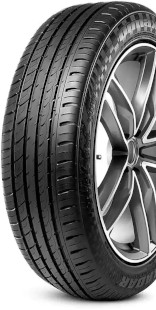Save up to 15% off today on All Season tyres
Today save 15% OFF the price of selected All Season tyres. Use promotion code SAVE15 at the basket.

...searching
Today save 15% OFF the price of selected All Season tyres. Use promotion code SAVE15 at the basket.

If you've ordered the wrong tyres, we'll correct your order free of charge. No hidden fees, just excellent value.

From £6.99 per tyre our Tyre Guarantee covers accidental damage, punctures and bulges. T&Cs apply.

We know that it is important to choose the right run flat tyre for your vehicle and driving style.
To ensure that there is a choice for all types of motorists, Blackcircles.com stocks a vast array of different run flat tyres.
The Michelin Primacy 3 Zero Pressure is the runflat version of the Michelin Primacy 3.

The Bridgestone S001 redefines the Potenza series with a Formula 1 precision handling Ultra High Performance tyre which offers outstanding grip in the wet and dry conditions.

The Hankook Ventus S1 Evo 3 K127B is a high-performance Summer Tyre designed for optimal handling in summer weather.

An Ultra High Performance tyre, designed for top of the range vehicles.

The Radar Dimax R8+ is a high performance tyre designed for both passenger cars and SUVs.

The Bridgestone Turanza T005 DriveGuard is a high performance car tyre, developed to deliver excellent steering response. It is the run flat version of the popular Turanza T005 tyre.

Designed to provide control and safety, the Pace Alventi provides great traction and increased ride comfort.

The Michelin Pilot Sport 4 Zero Pressure has been designed to deliver a seamless blend of enjoyable driving and top safety.

Part of the Green Performance range from Pirelli, designed to provide improved fuel consumption and lower CO2 emissions.

The Sport Contact 5 SSR is the latest ultra high performance tyre from Continental combining maximum safety and driving pleasure

Run Flat tyres have been constructed specifically for the purpose of remaining functional, for a limited amount of time, when there is no air pressure in the tyre. The use of TPMS (tyre pressure monitoring system) is essential in the use of run flat tyres. As this will alert drivers to any problems.
In the event of a puncture whilst driving, a run flat tyre can still be driven on for around fifty miles - giving you time to drive home, or to a nearby garage safely.
It is possible to switch from conventional tyres to run flat tyres, however, in doing so you need to ensure your car is fitted with a compatible tyre pressure monitoring system. This is essential in relaying to the motorist if the tyre suffers a puncture.
You tell whether a tyre is a run flat tyre by checking the sidewall - unfortunately there is no industry standard code to represent this.
Different manufacturers use different symbols. These include: • Continental Run Flat Tyres – SSR • Dunlop Run Flat Tyres – DSST or ROF • Goodyear Run Flat Tyres – ROF or EMT • Bridgestone Run Flat Tyres - ROF or RFT or RSC • Michelin Run Flat Tyres – ZP • Hankook Run Flat Tyres – HRS or have B at the end of the product number (e.g. K115B) • Pirelli Run Flat Tyres – RSC • Yokohama Run Flat Tyres – ZPS
To ensure you can select the right type of tyre, Blackcircles.com has the word 'Run Flat' listed against run flat tyres on our tyre search results section. So you can easily which products are run flat tyres.
Run flat tyres are designed with reinforced sidewalls that allow them to remain functional even after losing air pressure.
While standard tyres rely on air to support the vehicle, run flat tyres can temporarily support the vehicle’s weight without air, giving you time to reach a garage safely.
Yes, a tyre pressure monitoring system (TPMS) is essential for vehicles using run flat tyres.
Since run flats can continue to drive when deflated, a TPMS alerts you when pressure is lost – helping you avoid driving unknowingly on a punctured tyre.
In most cases, yes, but your vehicle must be equipped with a compatible TPMS.
Run flat tyres need this system to alert you to pressure loss, as they don’t visibly deflate like standard tyres.
Generally, no. Once a run flat tyre has been driven on while flat, its internal structure may be compromised.
For safety, replacement is recommended rather than repair, even if the damage seems minor or the puncture was caused by a nail.
It depends on your driving needs. Run flat tyres offer added safety by letting you drive up to 50 miles after a puncture, remove the need for a spare, and reduce the risk of losing control.
However, they tend to cost more, ride slightly firmer, and can’t usually be repaired. Consider your priorities before making the switch.
Run flat tyres are typically more expensive and slightly heavier than standard tyres.
They can also provide a firmer ride, which may lead to reduced comfort and increased road noise depending on the vehicle and driving conditions.
Like standard tyres, the lifespan of run flat tyres depends on factors such as driving style, road conditions, and maintenance.
While construction varies between brands, proper care – especially maintaining correct air pressure – can help them last just as long as conventional tyres.
If your vehicle came with run flat tyres as standard, switching to conventional tyres may affect handling and comfort.
Suspension settings are often tuned for the firmer ride of run flats. Always check with your vehicle manufacturer or a tyre specialist before making the switch.
Most run flat tyres can be driven for up to 50 miles at a maximum speed of 50 mph after a puncture.
However, the exact distance may vary by manufacturer, so always check your specific tyre’s guidelines.
Run flat tyres are commonly found on models from BMW, Mini, Mercedes-Benz, Audi, and some Volkswagen vehicles.
Fitment varies by model, so it’s best to check your vehicle handbook or consult with the manufacturer.
Yes. Due to their stiffer construction, run flat tyres can produce more road noise and offer a firmer ride compared to standard tyres.
However, modern designs increasingly include noise-dampening technology to improve comfort.
Run flat tyres use similar compounds to standard tyres and typically wear at a similar rate.
As with any tyre, proper maintenance – such as keeping the correct air pressure – is key to maximising lifespan.
Whether you are in the market for cheap tyres, budget tyres, mid-range tyres or premium tyres, you will find that Blackcircles.com stocks a wide variety, from the world’s renowned tyre manufacturers.